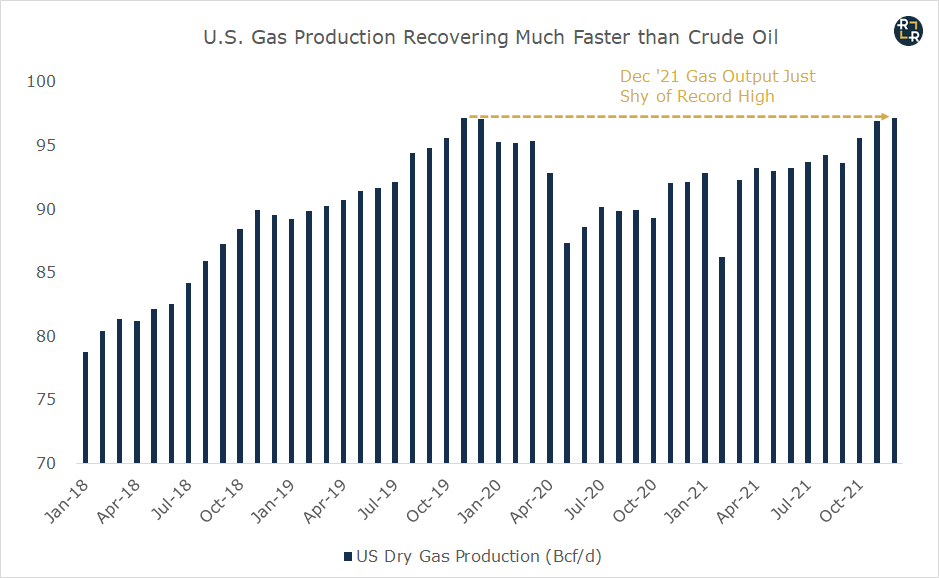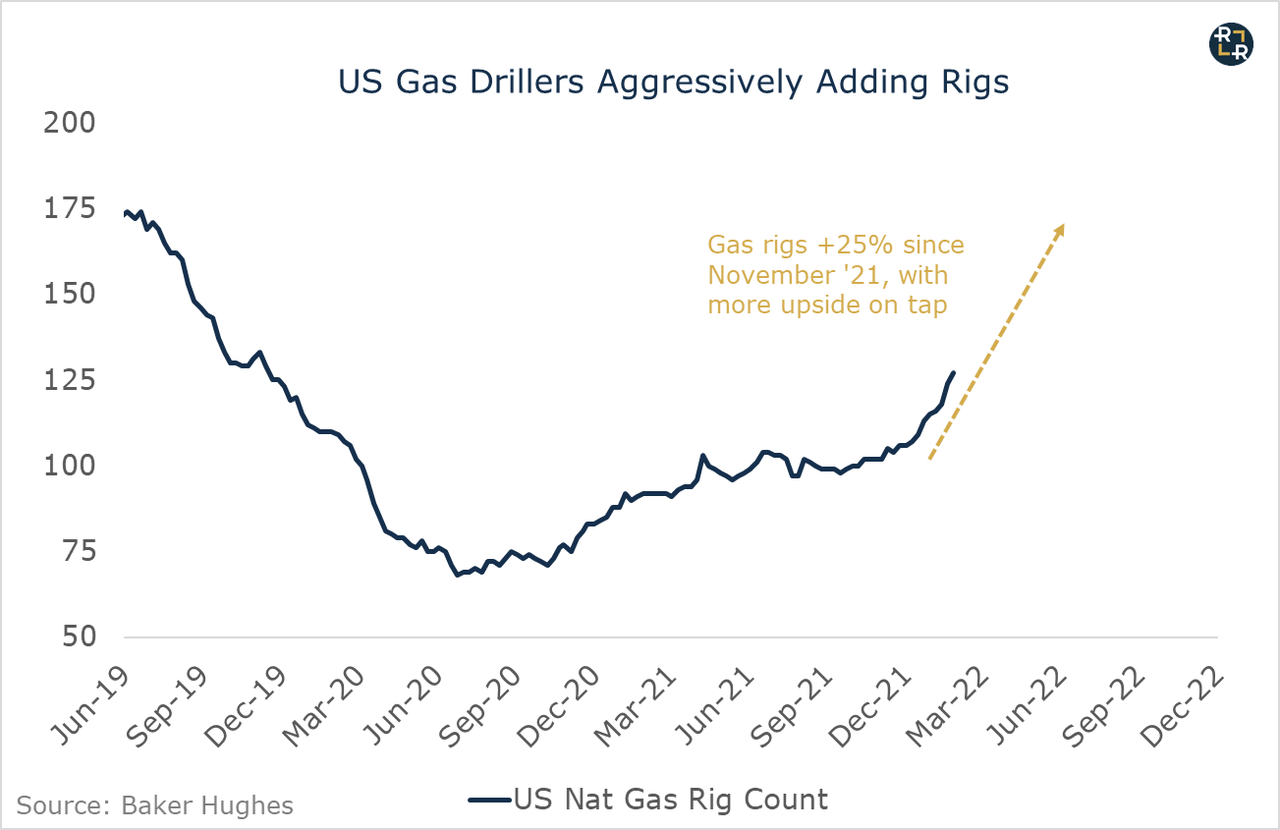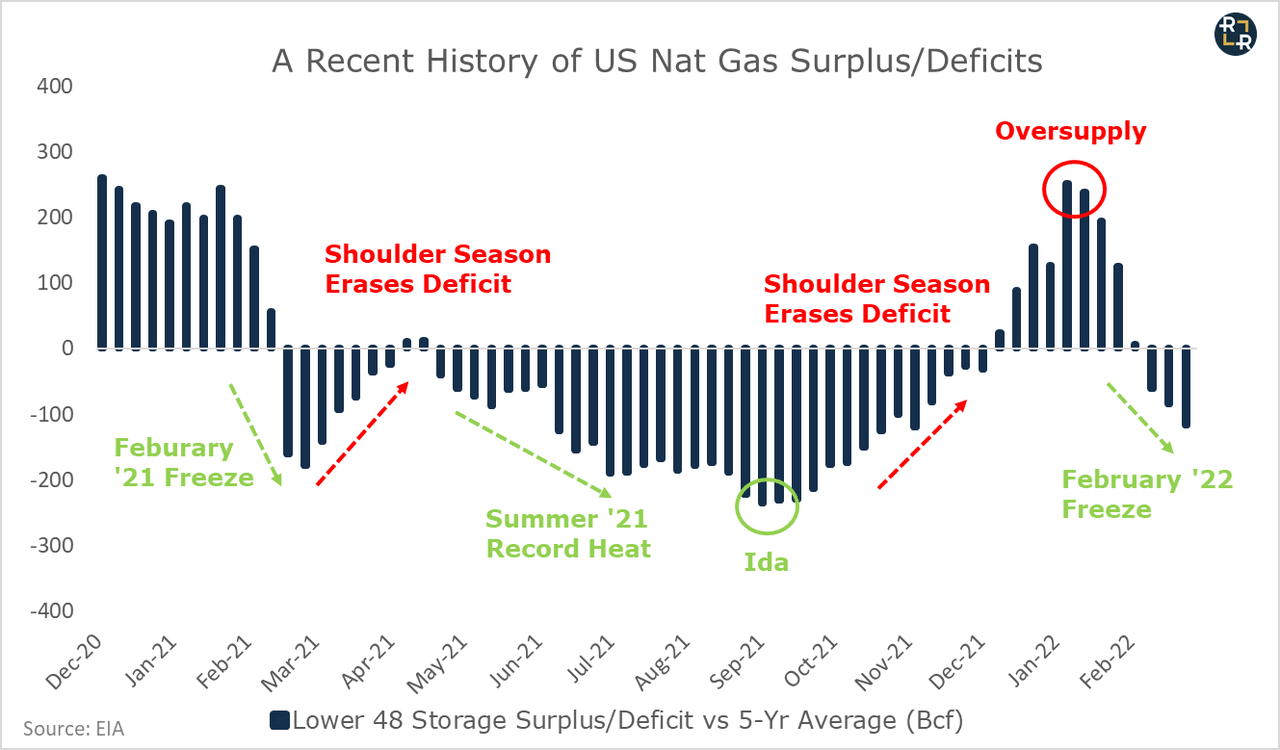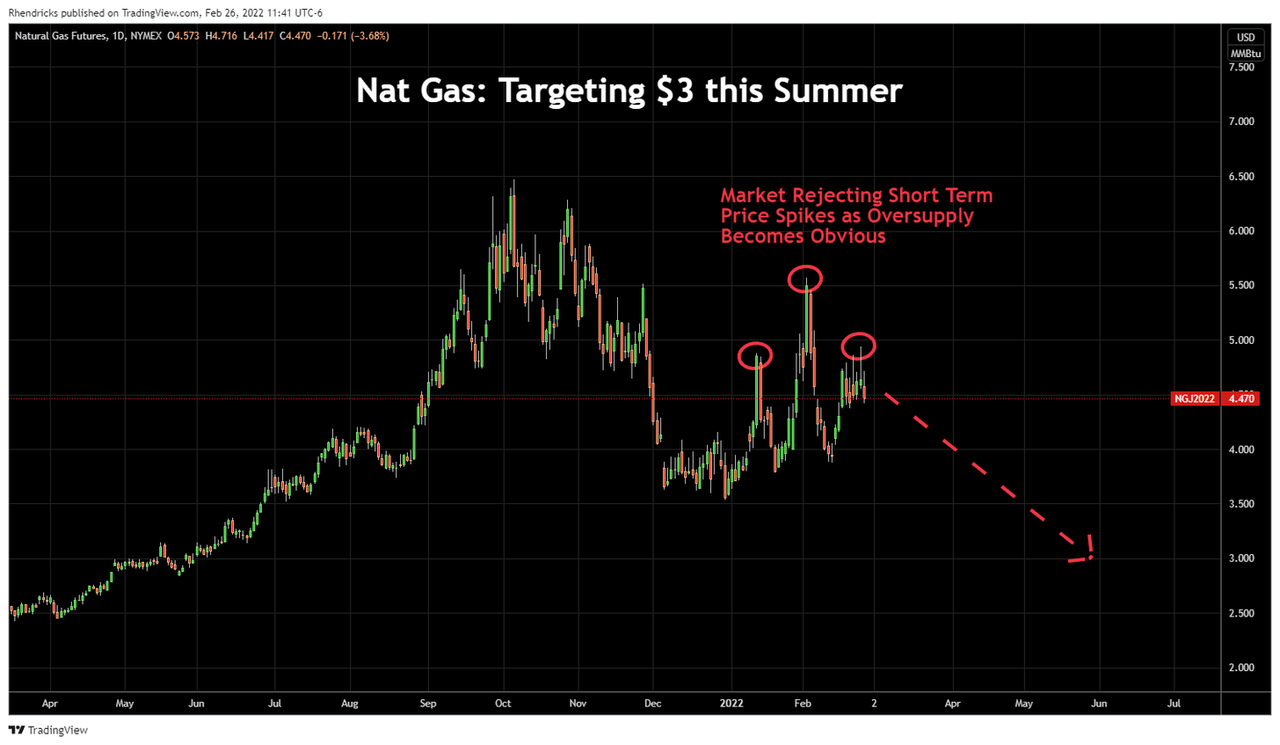I believe it’s once again time to short natural gas.
I first wrote about shorting natural gas last Fall, via the United States Natural Gas Fund (NYSE:UNG), as prices spiked to $5 on their way to a peak of $6.50. The core thesis back then was similar to the thesis now—traders mistakenly bidding up US gas prices alongside a massive rally in European gas.
There’s just one problem…
The events in Europe—or anywhere outside of North America—have virtually zero net impact on the domestic US gas market. Unlike other commodities (i.e. crude oil), America can’t simply export more natural gas when overseas prices spike. Why? Because US gas exports require infrastructure. Specifically, liquefied natural gas (LNG) terminals.
We know how much LNG export capacity exists at any given time (plus or minus the normal fluctuations around maintenance, shut-ins, etc.) So when overseas gas prices spike, it typically has zero net impact on the US supply/demand situation.
That’s because US LNG facilities are built to run at full capacity, under long-term supply contracts. This is not a situation where higher overseas prices can suddenly bring new US LNG into the global market.
And yet, we routinely see headlines like the following:

The implication that European events somehow justify boosting the front month US gas futures contract tells me the author has zero appreciation for how US gas and LNG markets operate. Gas traders are making the same basic mistake, creating the opportunity at hand today.
Importantly, this is not just about shorting US natural gas. The real opportunity here is shorting the surge in volatility in the market, without any true fundamental reason. We’ll address the specific trade structure for how I plan to capitalize on this situation at the end of this post.
For now, let’s dig into the supply/demand fundamentals to see why US natural gas prices are likely heading substantially lower this summer.
US Gas Supply/Demand Overview
Starting on the demand side of the equation, domestic US gas consumption is expected to be roughly flat this year (outside of any extreme weather anomalies). We know this given the lack of any significant net new gas-fired power generation coming online this year.
We also know that America will add roughly 2 billion cubic feet per day (Bcf/d) of new LNG export capacity this year. So then, the question becomes: what does the supply side of the equation look like?
And therein lies the key bearish catalyst.
US Gas Production Near New Record Highs
Based on the latest official EIA data, US gas production reached 97.2 Bcf/d in December of last year. That’s within 0.1 Bcf/d of a new record high:

This is a big deal because it shows that natural gas producers are not suffering from the same degree of capital restraint that’s holding back US oil production. As a reminder, US production remains more than one million bbl/d off of pre-COVID highs, even despite today’s high price environment.
I believe the key difference allowing for this quicker rebound in US gas production can be explained by the greater proportion of private operators in the gas patch. And one thing we know is that private rig operators have been much more aggressive in ramping up drilling activity versus their publicly owned peers, as shown below:

This chart has implications for Haynesville gas supply in particular—the key basin located just north of the growing LNG export infrastructure along the US Gulf Coast. Many of the drillers in Haynesville are small, independent exploration and production (E&P) companies who seem to have much less trouble raising funds for deploying rigs in today’s market.
In just the last few months alone, we’ve seen a major uptick in the natural gas rig count—up 25% since November 2021, and showing no signs of slowing anytime soon:

Today’s Surging Rig Count = Tomorrow’s Production Growth
Now, here’s the key about the rig count - it tells you where production is headed six months from now. That’s because of the natural time lag between contracting a rig, drilling and completing the well, and then finally getting production to market.
So, the near record-high production in December did not fully reflect the recent 25% surge in the gas-directed rig count. That means we can likely expect a lot more production to start hitting the market in the coming months and beyond.
Finally, it’s not just gas-focused drillers that are adding new supply into the market.
Higher Oil Prices Mean More Shale Gas
The US is getting a lot of additional gas supply from oil drillers in the Permian Basin. That’s because these oil drillers produce a lot of associated gas as a byproduct of their oil production.
In the last 12 months, the Permian has become the largest growth engine for US gas supply. We can trace that back to fact that the Permian Basin remains the lowest cost source of shale oil, and thus drilling activity is hitting new highs with oil upwards of $100 per barrel as we go to press.
The bottom line: natural gas production is benefitting from both the high concentration of private capital in the Haynesville shale, plus the high oil prices keeping the Permian Basin firing on all cylinders. These two basins alone will likely overwhelm the modest 2 Bcf/d of incremental LNG demand coming online in 2022.
If we view the combined gas production from the Permian and Haynesville as a single series, we see that these two basins set a new record high as early as January of 2021. Meanwhile, in the last 12 months alone, the two basins have added a whopping 4 Bcf/d in new production:

With the gas-focused rig count shooting higher in recent months, and the Permian benefitting from $100+ oil, I see no reason for this trend to slow anytime soon. If another 4 Bcf/d of new gas supply hits the market this coming year, that would easily overwhelm the modest 2 Bcf/d of incremental LNG export capacity slated for this year.
Shoulder Season Should Reveal Excess Gas Supply
We should begin witnessing the signs of excess gas supply via inventory builds during the upcoming shoulder season (i.e. after peak winter gas demand in March).
Let’s review the gas storage situation in the context of recent history and where things could evolve from here. The chart below summarizes the key drivers of the US gas surplus/deficit since December 2020:

As readers will recall, my short gas thesis last Fall said that extreme summer weather created a temporary supply deficit, which would likely get erased in the absence of extremely cold winter weather. The chart shows that’s precisely what happened, as US gas inventories shifted from deficit to surplus by December of last year.
This flip from deficit to surplus sent gas prices reeling fell from a high of $6.50 per Mcf in October down to $3.60 by the end of December. I believe we could see a repeat situation in the coming months, with prices falling as low as $3–$3.50.
The set-up is a familiar one: extreme cold in February of this year created a short-term supply deficit, pushing prices up to as high as $5. More recently, US gas prices have been pushed up alongside the broader rally in global energy prices on Russian invasion headlines. However, note that the market has been very quick to eliminate these short-term price spikes in recent weeks.
Looking ahead, I expect the current rally on the Ukrainian headlines will quickly get reversed, and prices will head towards $3 through the shoulder season into the summer:

One way to get short natural gas exposure is through futures of exchange-traded funds like the United States Natural Gas Fund (UNP), which seeks to track US natural gas prices on a one-for-one basis. For those who would prefer buying instead of selling short, another option is the ProShares UltraShort Bloomberg Natural Gas ETP (NYSE:KOLD). This ETP seeks to provide 2x exposure to natural gas prices, on a daily basis. For example, if natural gas falls by 5%, KOLD is designed to rally by 10%.
It’s important to note that I do not provide investment advice. But if I did, I would not recommend holding the KOLD ETP as a long-term investment. However, if US gas drops to $3-$3.50 over the next few months—as I expect—units of KOLD could gain 50% or more.
This content was originally posted at the Ross Report.
